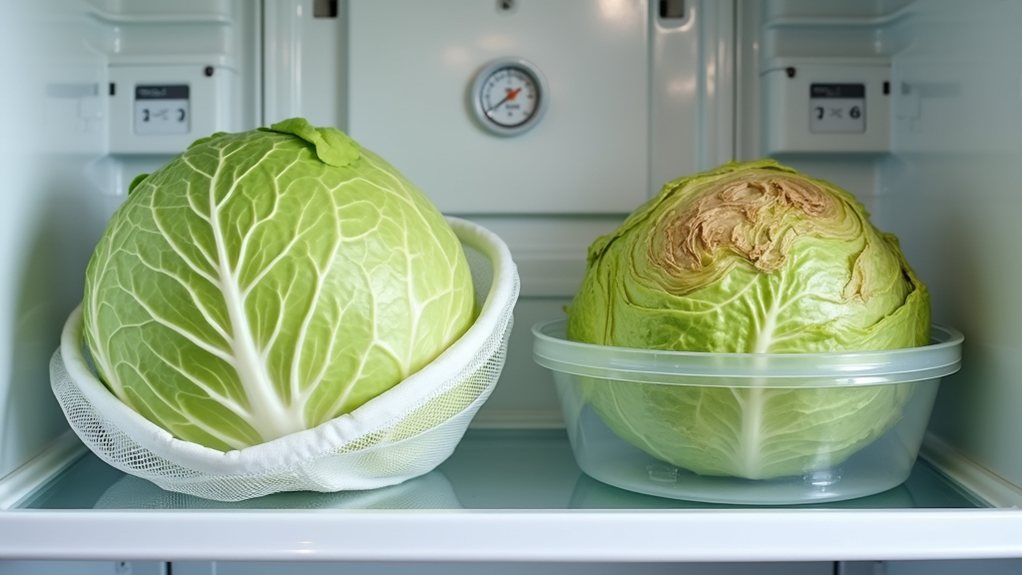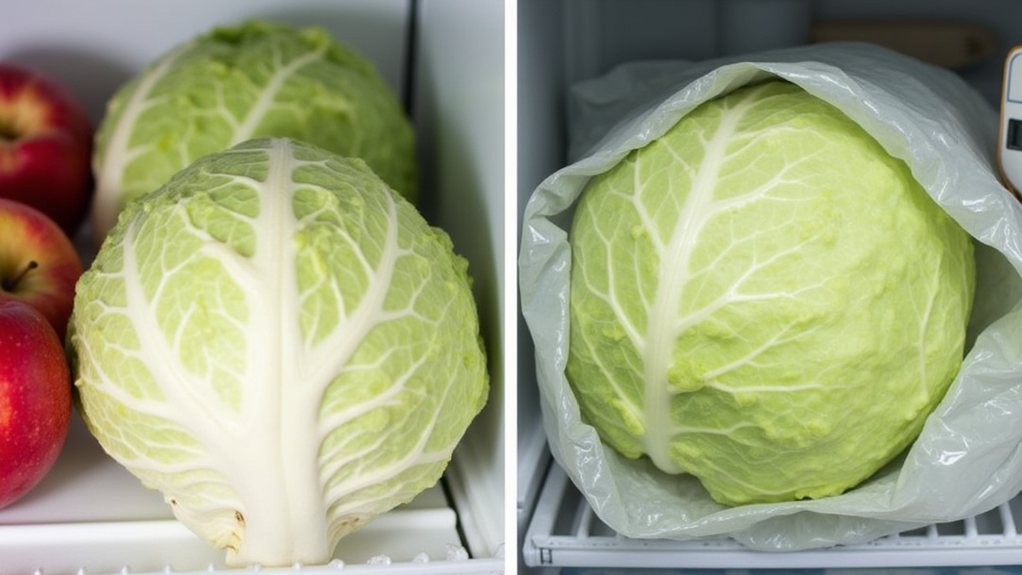Cabbage storage mistakes cost households more than mere pennies each year, with the average family discarding produce well before its natural expiration. Most refrigerators contain improperly stored cabbage, slowly wilting away in conditions that accelerate its demise. The humble vegetable, when properly housed, can remain crisp and nutrient-rich for months rather than weeks. Simple adjustments to temperature, humidity, and placement make the difference between long-term freshness and premature compost material. The secret techniques professional chefs employ might surprise even seasoned home cooks.
Expert Storage Tips for Long-Lasting Cabbage

Properly storing cabbage is a crucial skill for anyone looking to maximize this adaptable vegetable’s shelf life and maintain its nutritional value. Many consumers unknowingly compromise their cabbage’s longevity through common storage mistakes, missing out on the opportunity to keep this cruciferous vegetable fresh for up to two months. The key to extended freshness lies in understanding the ideal conditions that cabbage requires.
Contrary to popular practice, cabbage should remain unwashed until ready for use, as premature rinsing accelerates deterioration and diminishes vitamin C content. The best storage method involves placing whole cabbage heads in a plastic bag within the refrigerator’s crisper drawer, maintaining a consistent temperature below 41°F. Cabbage thrives in environments with high humidity levels, preferably above 90%, which helps prevent the leaves from drying out and losing their crispness.
Before storage, a careful inspection is necessary to verify the cabbage is firm and heavy with tightly attached leaves. Removing any damaged or wilted outer leaves prevents disease spread that could compromise the entire head. Gentle handling minimizes bruising, which otherwise creates entry points for bacteria and accelerates spoilage. Unlike tomatoes which benefit from room temperature storage, cabbage requires cooler conditions to maintain its texture and flavor.
Another critical yet often overlooked aspect of cabbage storage is keeping it away from ethylene-producing fruits like apples and bananas, which can trigger premature ripening and spoilage. For those without refrigeration access, a cool, dry, well-ventilated space offers a reasonable alternative, though with reduced longevity expectations. Some households successfully preserve cabbage for 3-4 months using the traditional method of hanging cabbages upside-down in a cool location. Unlike tomatoes that are enhanced through flavor caramelization when roasted, cabbage loses nutritional value when exposed to high heat for extended periods.
For partial heads of cabbage, tightly wrapping them in plastic and refrigerating can extend freshness for approximately three days. It’s important to avoid cutting cabbage until needed as this leads to loss of vitamin C and significantly faster spoilage rates. Those seeking even longer preservation options might consider transforming cabbage into sauerkraut through fermentation, freezing properly blanched cabbage for up to nine months, or dehydrating it for later use in different dishes.
With these straightforward but effective storage techniques, anyone can release cabbage’s remarkable shelf life potential, reducing food waste and enjoying this nutritional powerhouse throughout the seasons without sacrificing quality or flavor.






